Blue Butterflies Tell us that we were made by God
Butterflies are a gift, and blue butterflies are my favorite. It was special to hear my grandson say “blue butterfly” among his first words. He was impressed by the large blue Morpho butterflies flying about the butterfly house of the Missouri Botanical gardens. Another blue butterfly, the Pipevine Swallowtail, also flashes iridescent blue color formed by the reflection of light off microscopic structures in the wings. Only God can provide the genetics for purposeful structures like that in an amazing variety of forms for every environment around the world for His glory.
Blue Butterflies Tell us that God made Plants for food
We planted Pipevine, required by the caterpillars of the Pipevine Swallowtail, at our home in Missouri. Within a week, a female Pipevine Swallowtail detected the chemicals coming from the plants and arrived to lay some eggs! God made a plant and a butterfly with both in mind!
And to every beast of the earth and to every bird of the heavens and to everything that creeps on the earth, everything that has the breath of life, I have given every green plant for food.” And it was so.
Genesis 1:30
After moving to Colorado, I noticed a little blue butterfly that I had not seen before, the Melissa blue. This is one of many little blue butterflies in the Polyommatinae sub-family of Gossamer-winged butterflies. The plants required by the Melissa blue larva are in the Pea family, including Limber milkvetch. Several times I have seen the Melissa Blue laying an egg on the plant and visiting the flowers for nectar. You can be sure that I take special care of these plants on the property.
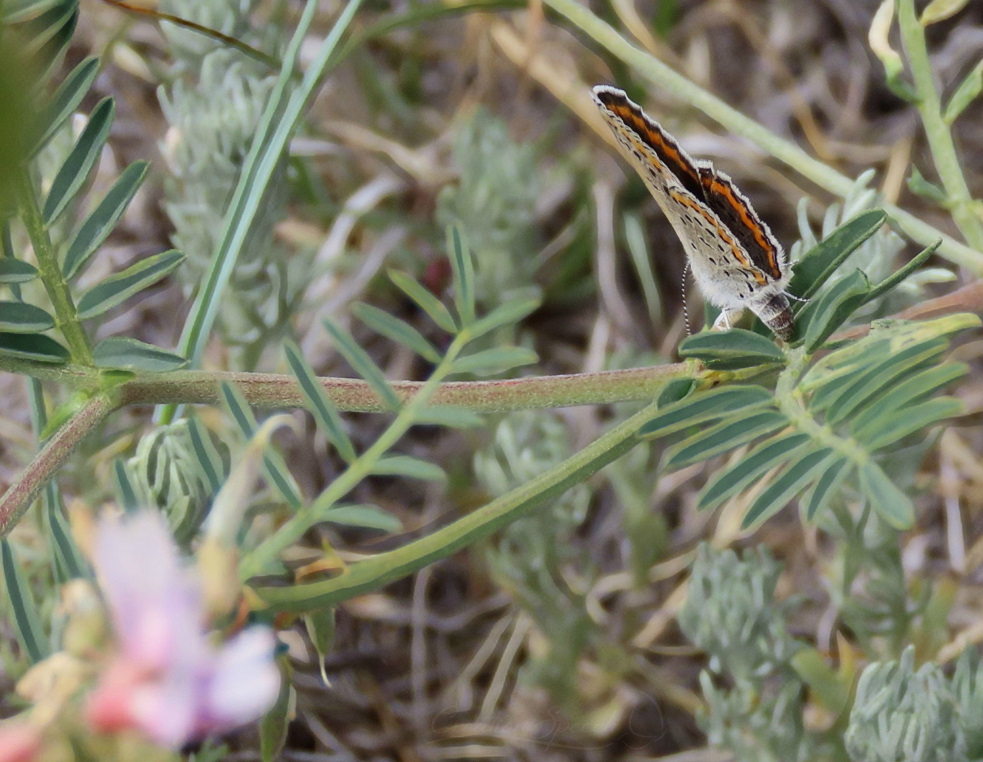
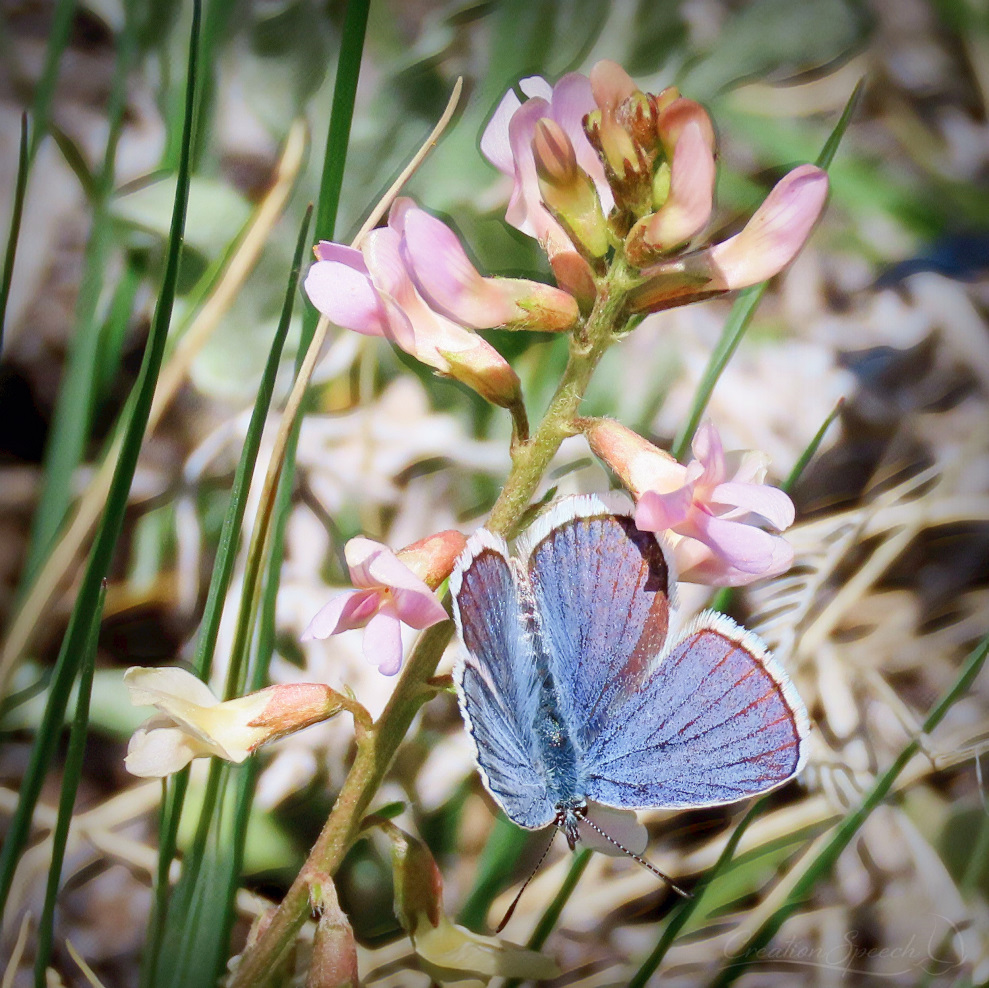
Blue butterflies tell us that God made all things with function and beauty
The Melissa Blue butterfly has a wing span of only about 3 cm and its wing edges are lined with hairs. Fine hairs connected to nerves help the tiny creatures sense the wind, temperature, and position to enable successful flights. The white outline of hairs around a blend of colors in the butterfly wings also adds to the creature’s beauty. Praise God for His goodness.
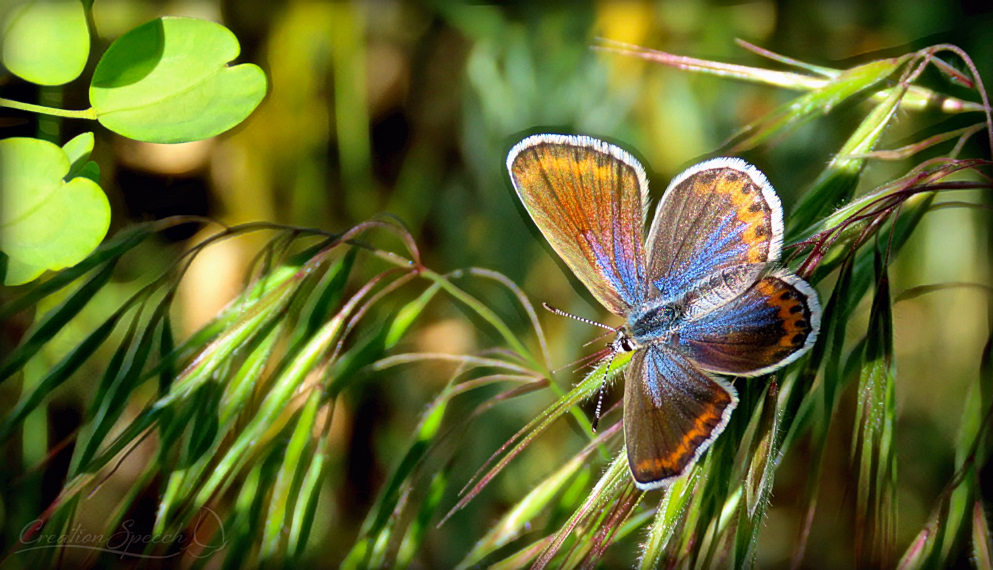
Blue butterflies tell us that God includes a symphony of colors in His designs promoting variation
Blue butterflies are not pure blue. If one looks closely, the wings display a blend of colors. This way enables endless variations. Some male Melissa Blue butterflies have black dots on the hind wing and more red-pink colors.
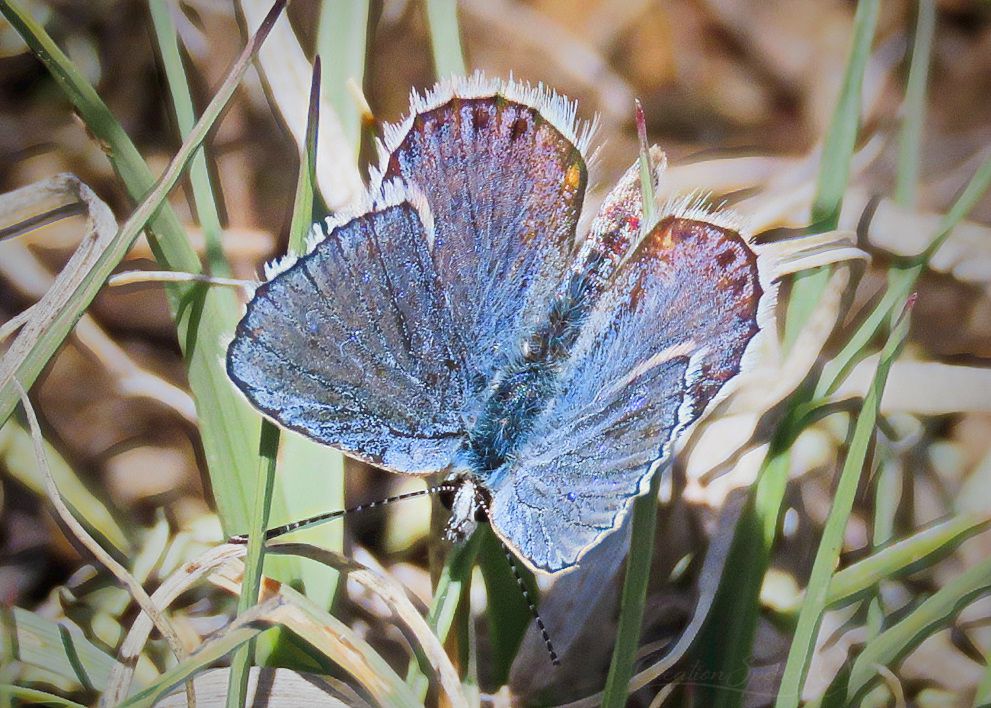
I understand that one can tell the difference between male Acmon Blue and the Lupine Blue butterflies by the widths of the dark border on the upper wings. So I labelled the butterflies in the following photos according to this insight.
The bands on the hind wings are an interesting design. On close inspection there is much to see. For fun, I modified a photo of the hind wings of what may be a female Acmon Blue butterfly, to appear as a piece of abstract art. It helped me to notice that the outside bands have a black dot on both ends of the orange band, unlike the inside bands.
Blue butterflies tell us that God made males and females look different
Below, the contrasting colors of male and female blue butterflies are illustrated.
One can also notice that females seem to have more reddish-brown colors on the underside of the wings as well as on the upper-side. I like to think of the brown-color symbolizing an earthen vessel set apart for the honorable work – such as her role to establish another generation.
a vessel for honorable use, set apart as holy, … ready for every good work
2 Timothy 2:4
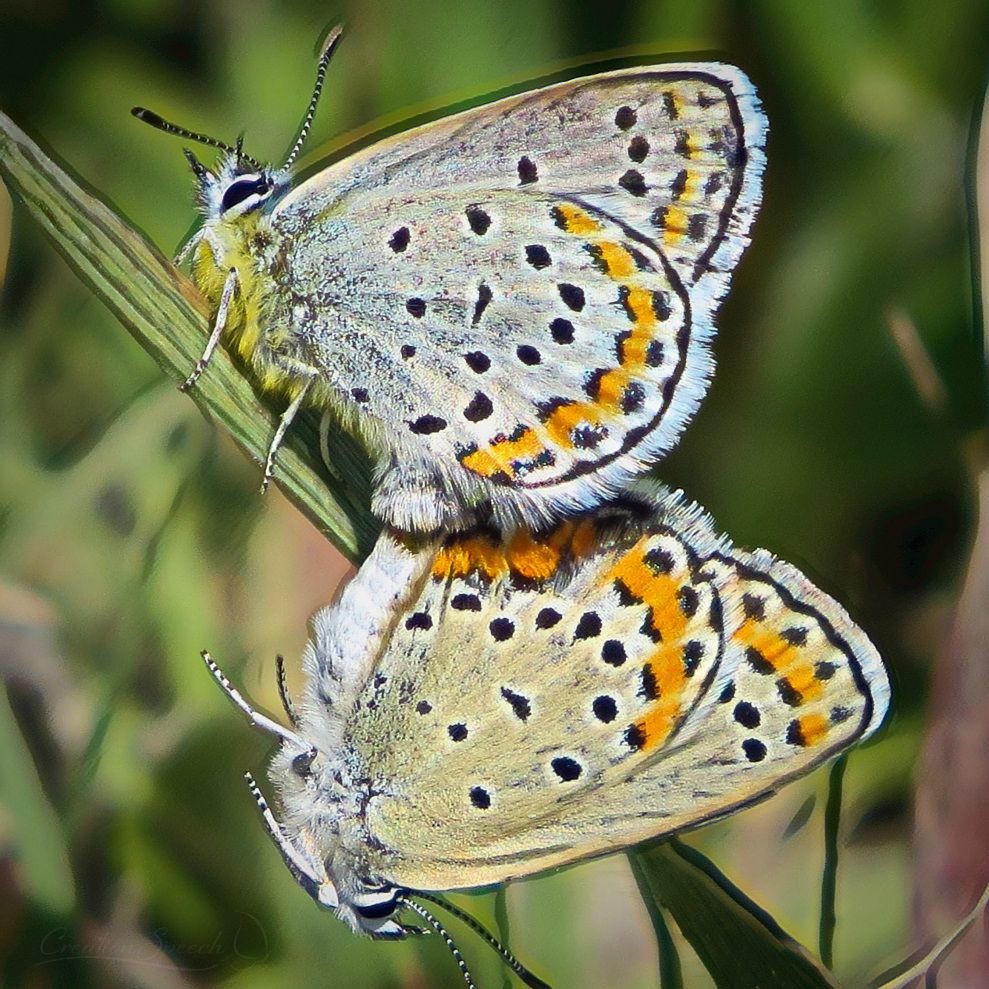
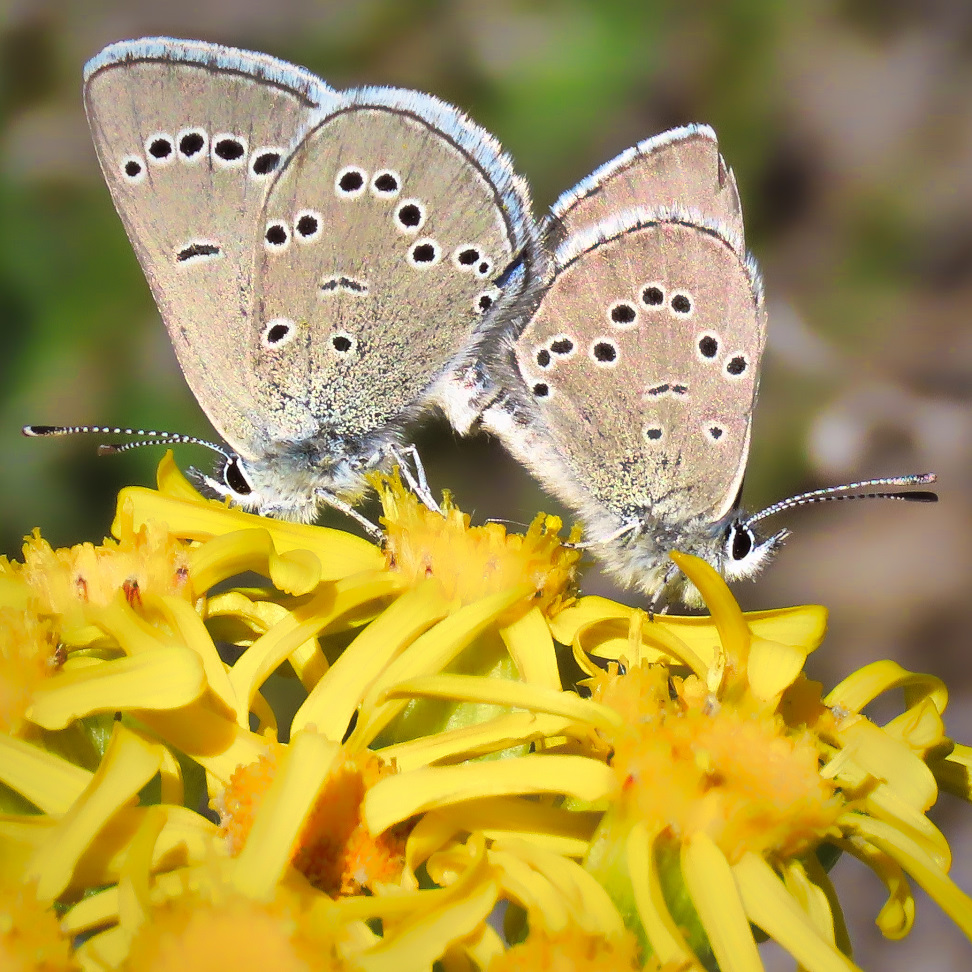
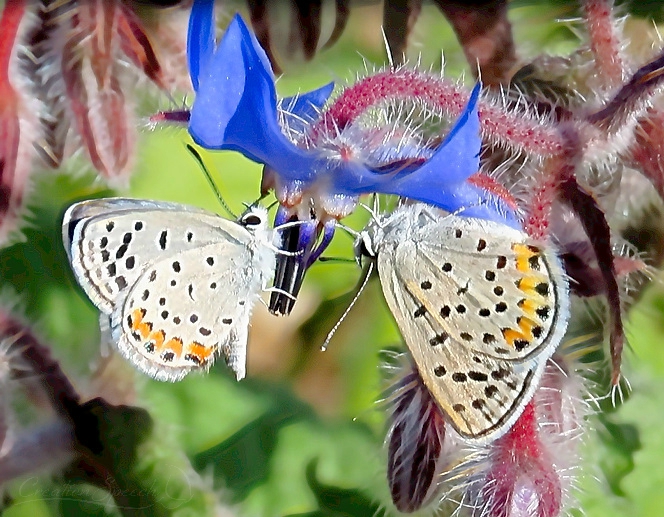
Blue butterflies tell us that males take initiative in courtship, females respond
One can notice above that male blue butterflies have more blue color than females. There are other creatures that exhibit the same differences between the sexes, such as Mountain Blue Birds and Peafowl. The color blue seems to represent authority, such as in the Word of God, God in the heavens (blue sky) the source of life (blue color of water is a reminder). God’s people were to put a blue thread in a tassel to remind them to be holy to Him.
The Lord said to Moses, “Speak to the people of Israel … to put a cord of blue on the tassel … to look at and remember all the commandments of the Lord, to do them, … be holy to your God. I am the Lord your God”
Numbers 15:37-41
It seems that male blue butterflies (and peacocks) provide a picture of headship. The color differences of the sexes are not a requirement (e.g., Monarch butterflies), but they may exist as a reminder of the truths in God’s Word.
For the husband is the head of the wife even as Christ is the head of the church, his body, and is himself its Savior.
Ephesians 5:23
Part of the headship role is to initiate courtship. I was filming a female Acmon Blue butterfly and then along came a male. The male Acmon Blue butterfly approached the female fluttering back and forth in front of her. The female acknowledged the visit with understanding, but ultimately responded with a no answer.
Blue butterflies tell us how well we steward God’s land.
Blue butterflies can be distinguished in-part by the patterns of dots, colors, and lines on the underside of the wings. I arranged the pictures in pairs so one can see similarities between certain types. I may have seen a Greenish Blue butterfly on our property, but not long enough to clearly distinguish it from a Silvery Blue. Hover over the lower portion of the photos to see identifications. The Arctic and Shasta Blue butterflies were not taken in our meadows as indicated. They thrive at higher elevations.
I expect that the patterns on the wings function to help recognize a potential mate. There are at least eight different blue butterflies in our meadows (Melissa, Silver, Boisduval’s, Reakirt’s, Dotted, Lupine, Acmon, and Marine). They vary in-part by their dependence on different host plants. The Boisduval’s Blue needs Lupine plants and the Rocky Mountain Dotted Blue needs Sulphur-flower buckwheat. So areas that maintain diverse habitats with a variety of plants will have more butterflies and testimonies of wisdom to share with the next generation.
Wow to those who join house to house, who add field to field, until there is no more room, and you are made to dwell alone in the midst of the land.
Isaiah 5:8
Blue butterflies tell us to be alert
Blue butterflies are free but need to be alert to dangers. Spiders match the colors of the flowers and so the blue butterflies need to recognize the difference and flee from danger.
Watch and pray that you may not enter into temptation.
Matthew 14:38
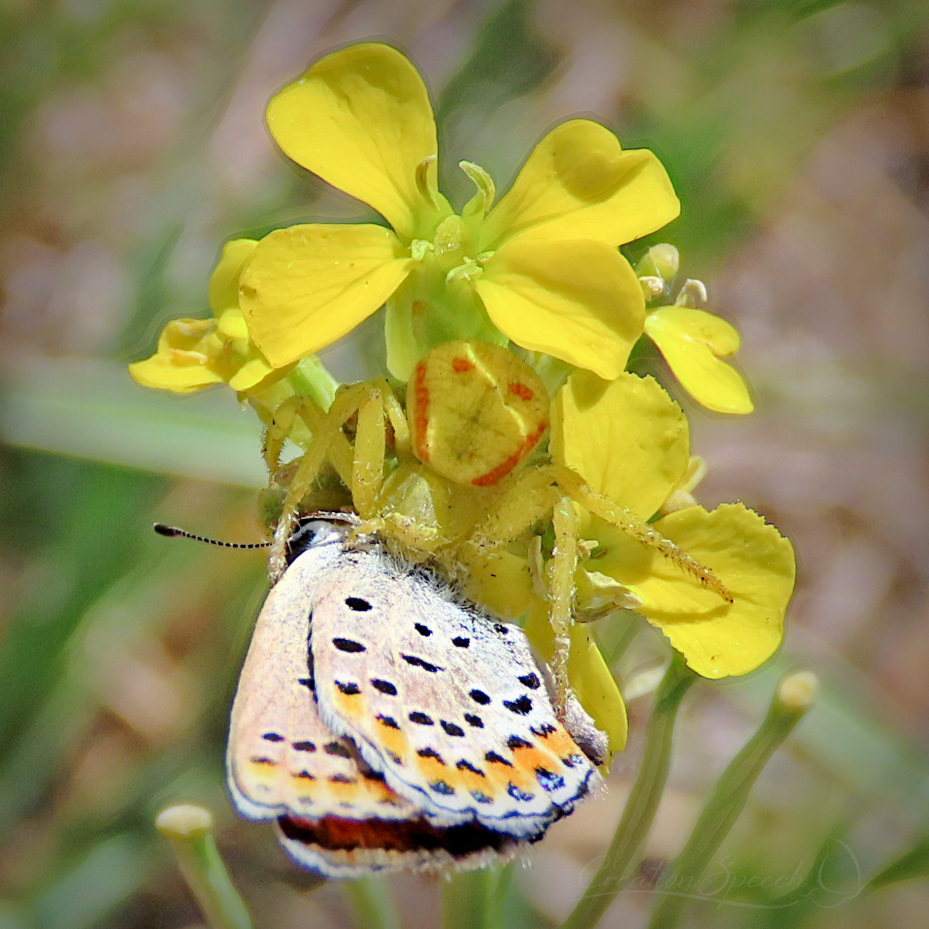
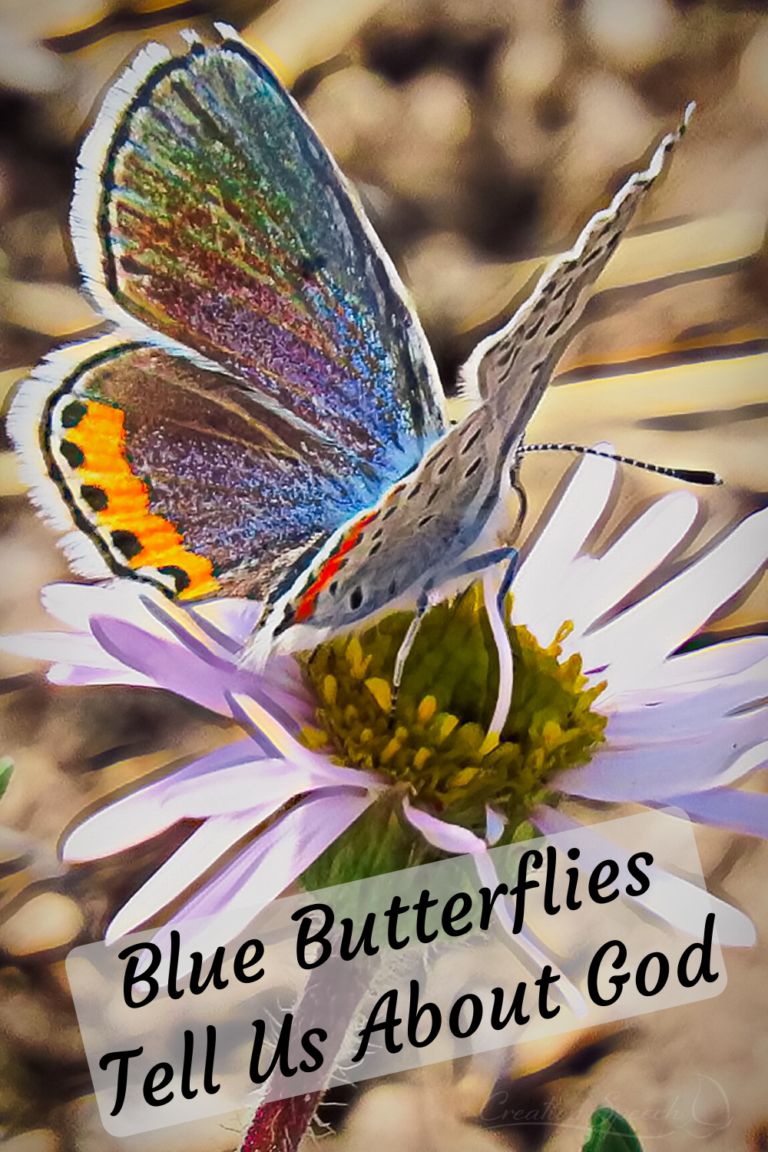
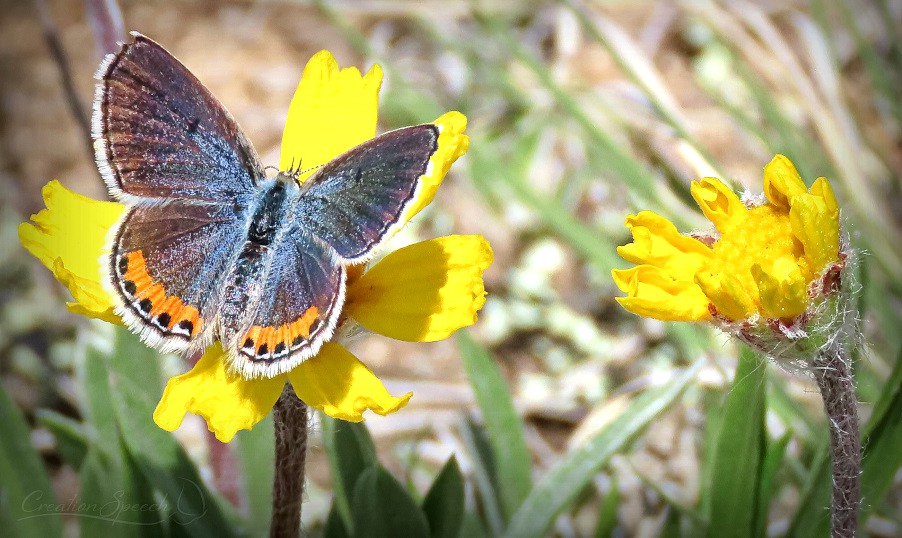
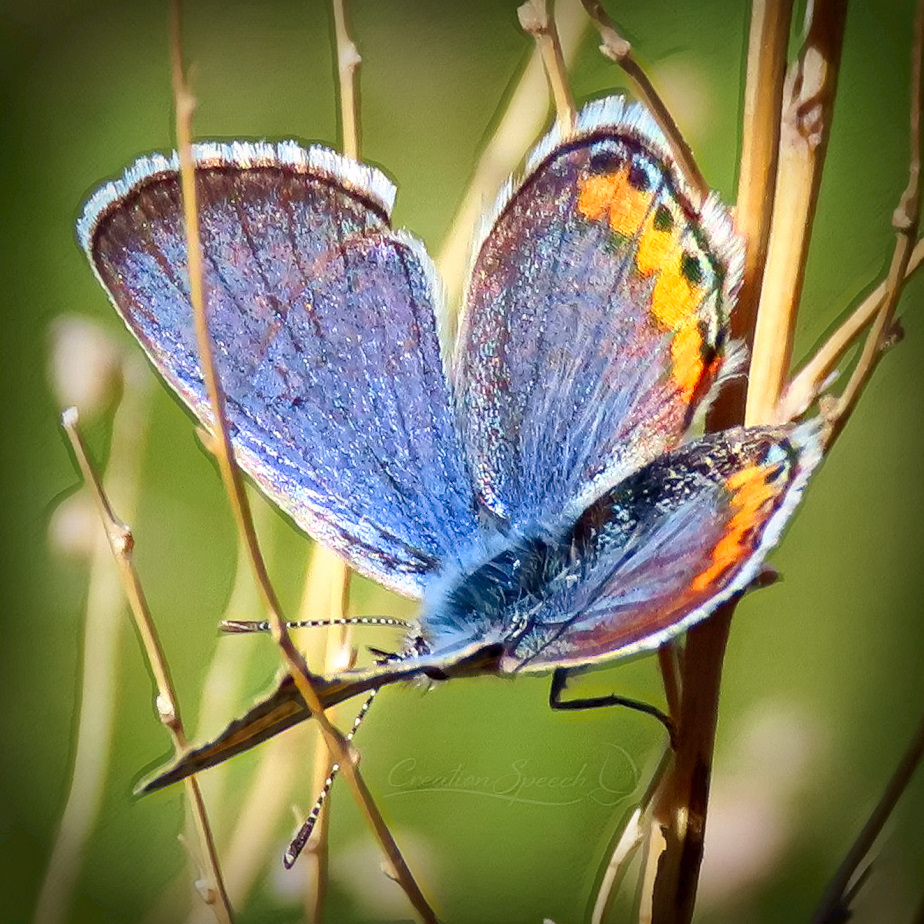
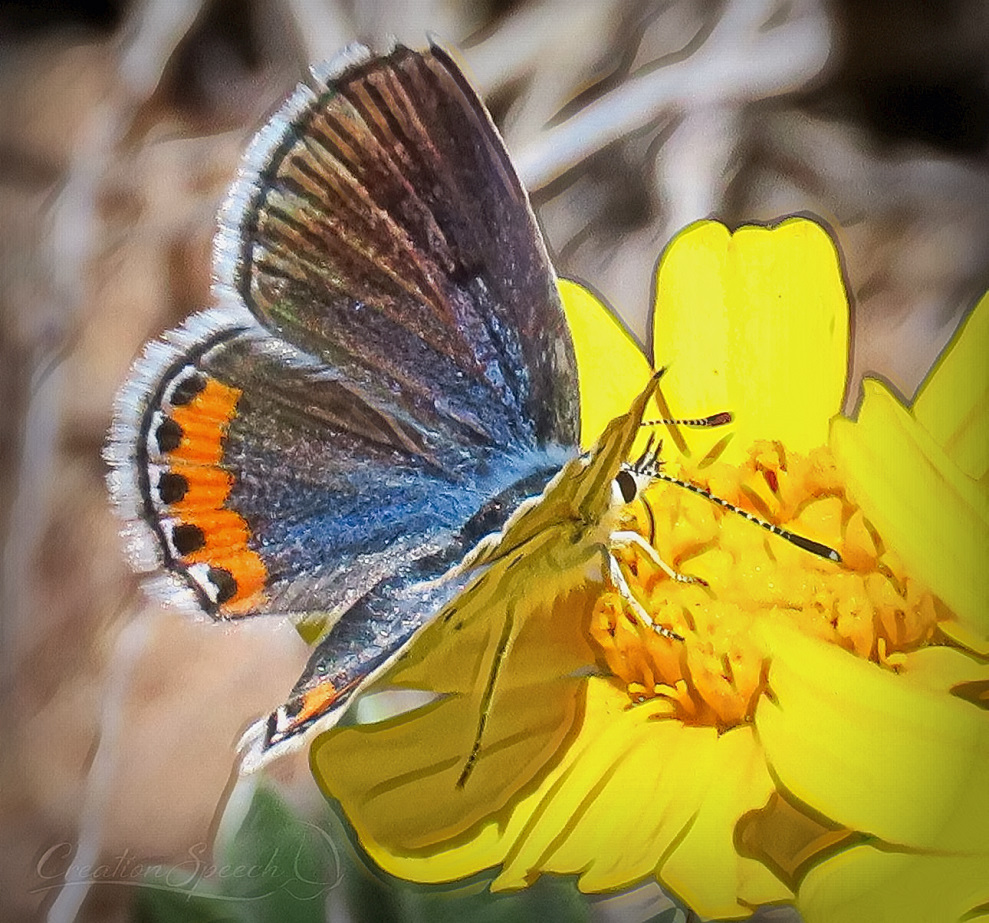
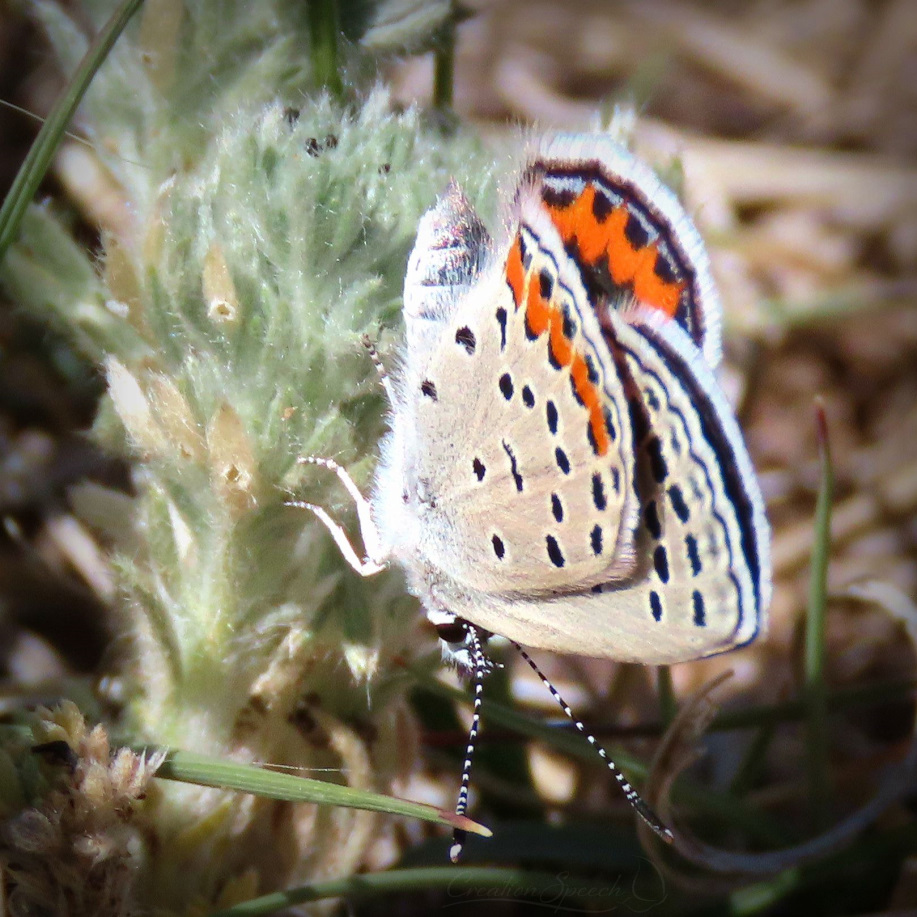
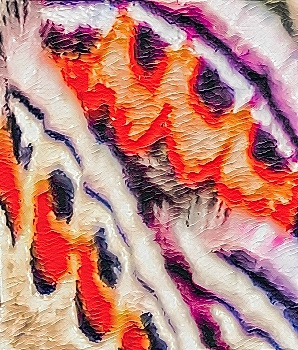
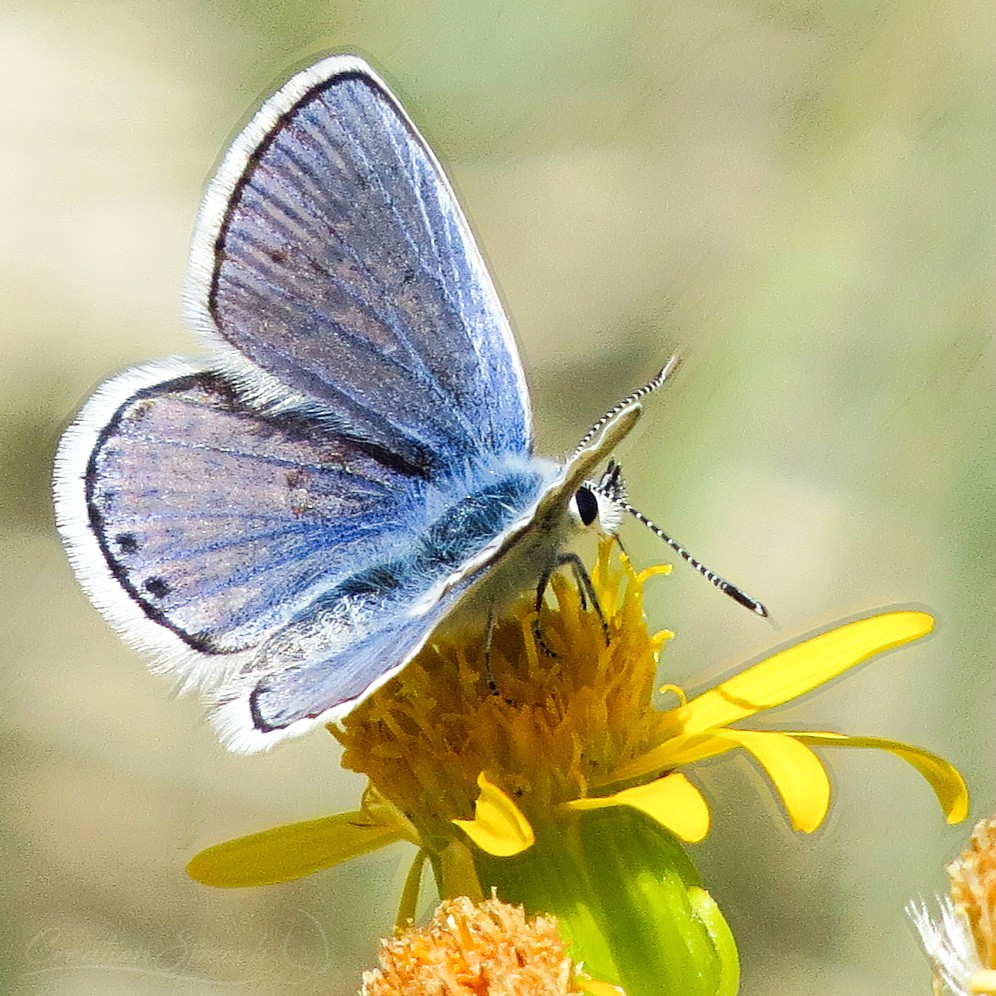
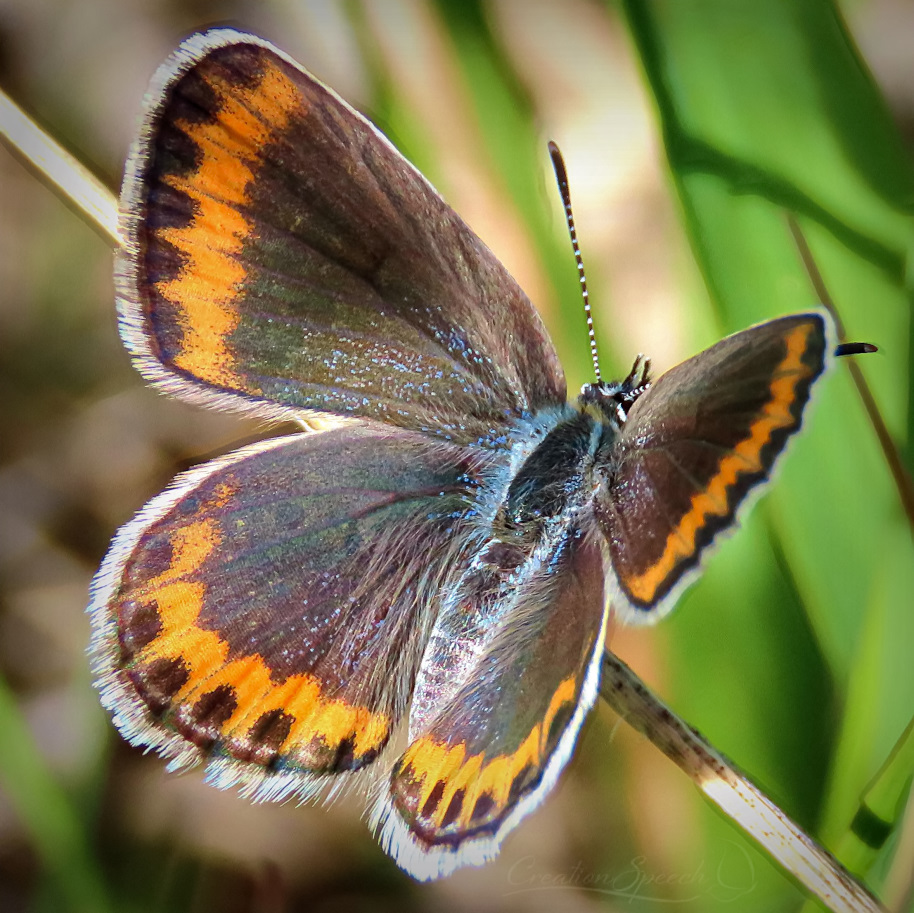
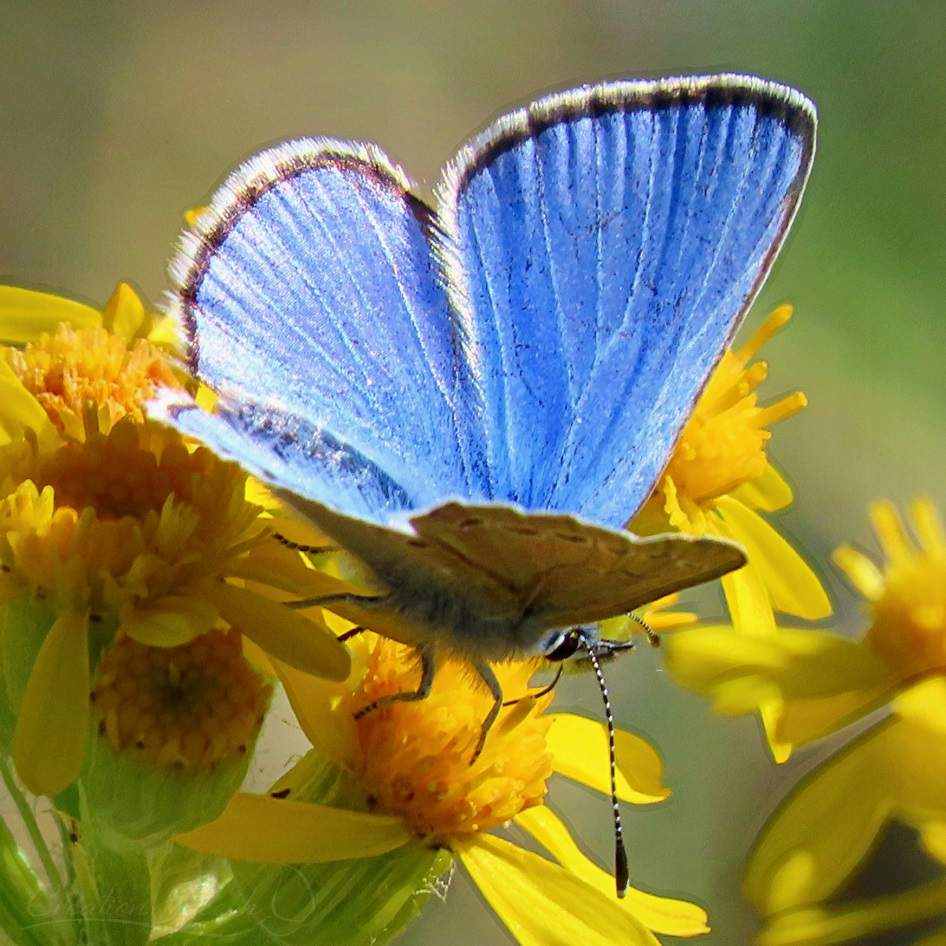
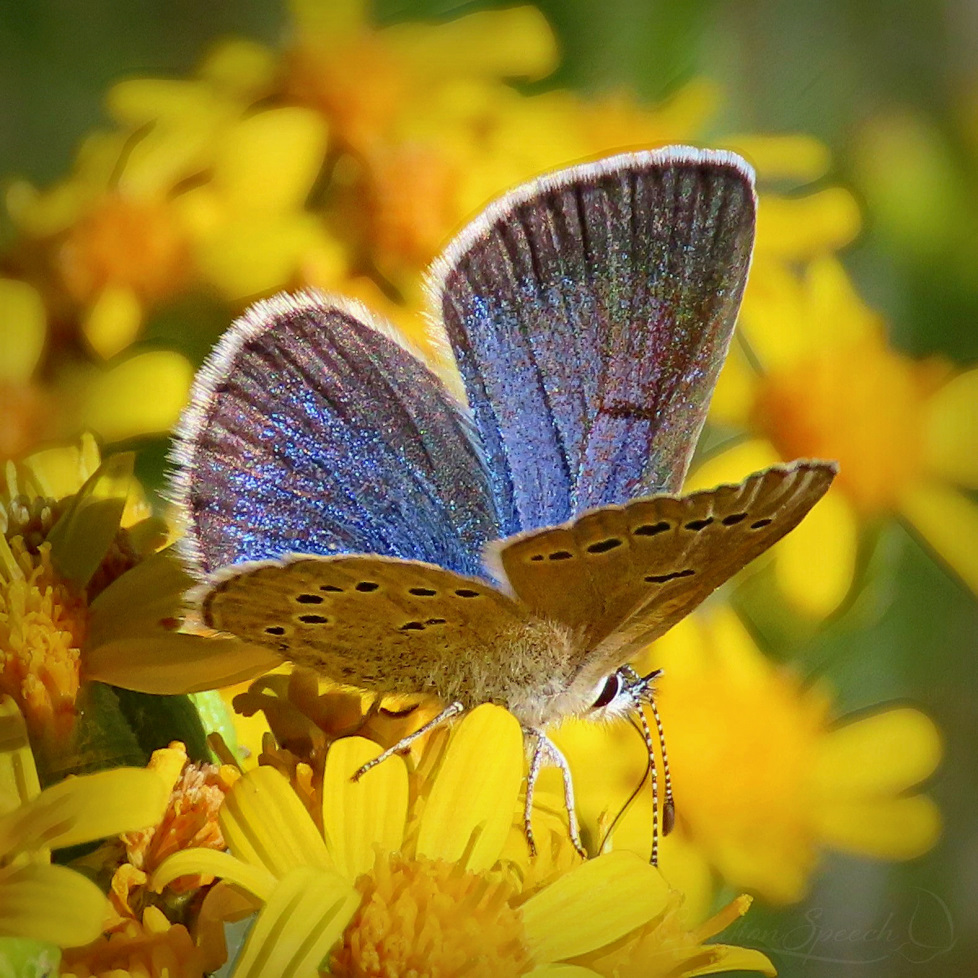
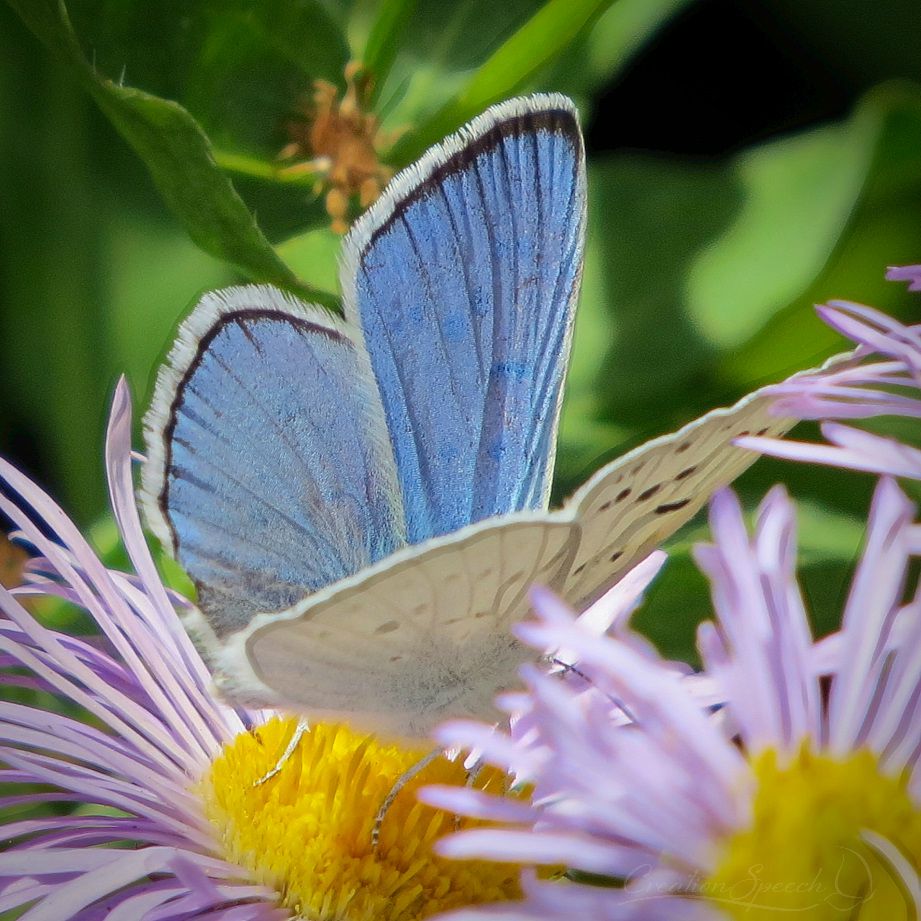
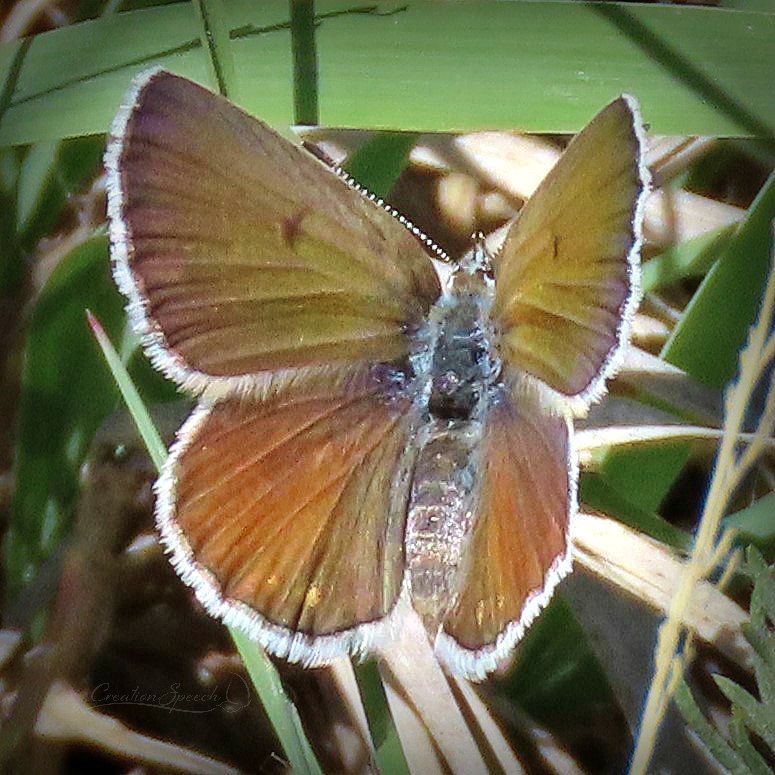
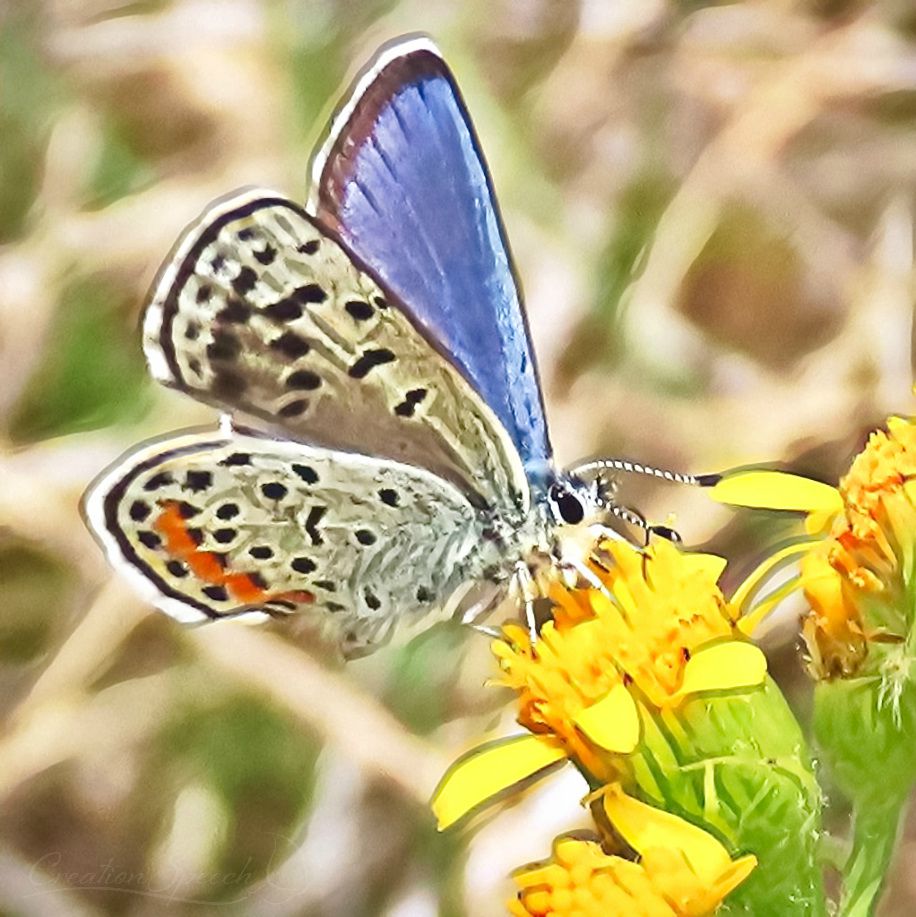
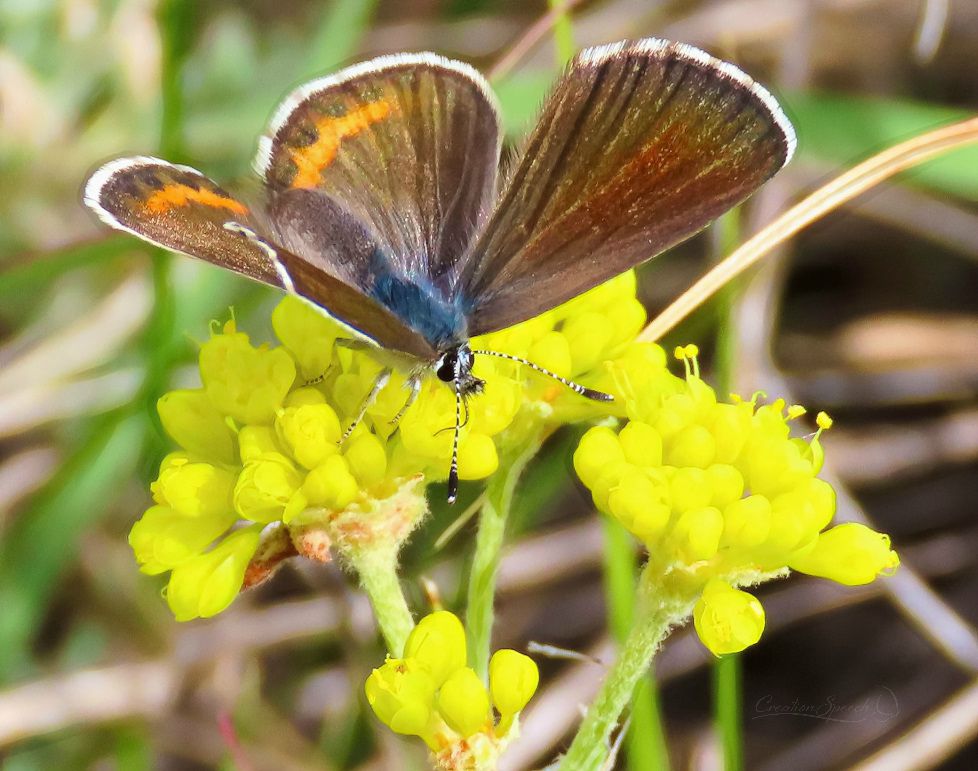
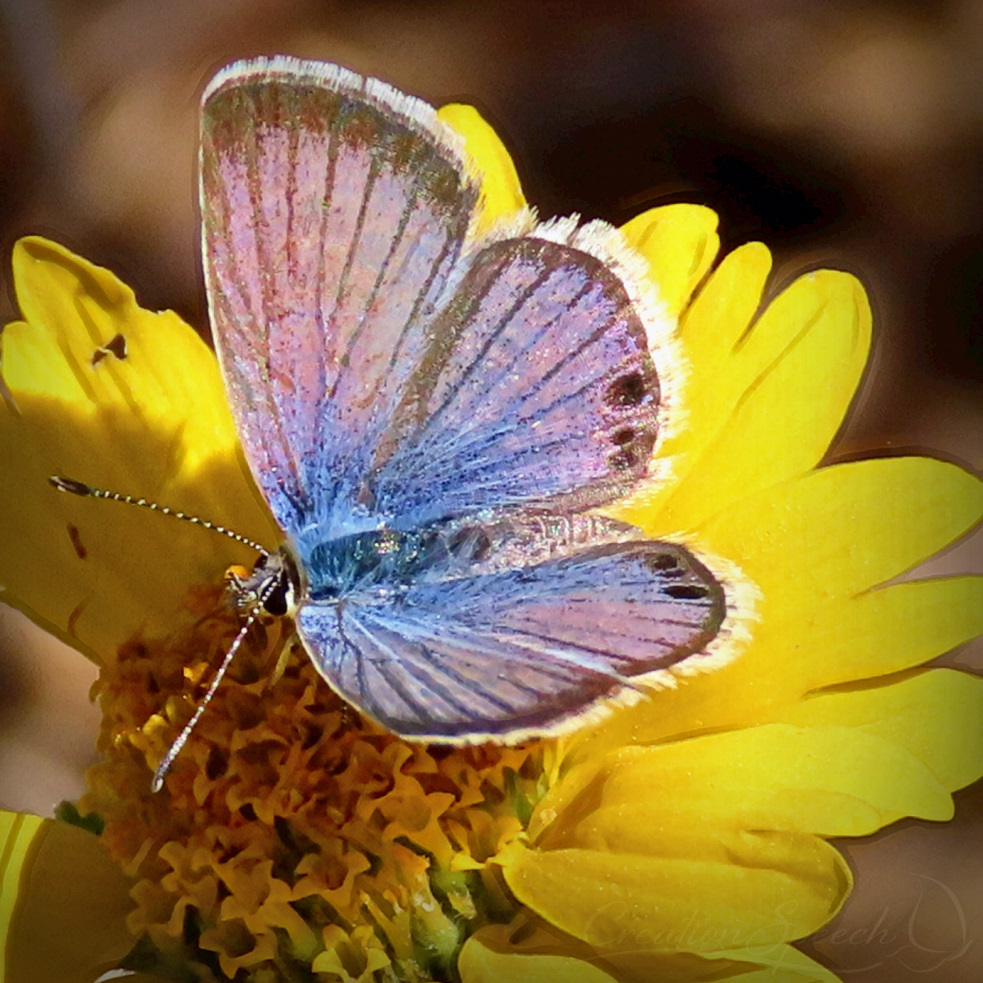
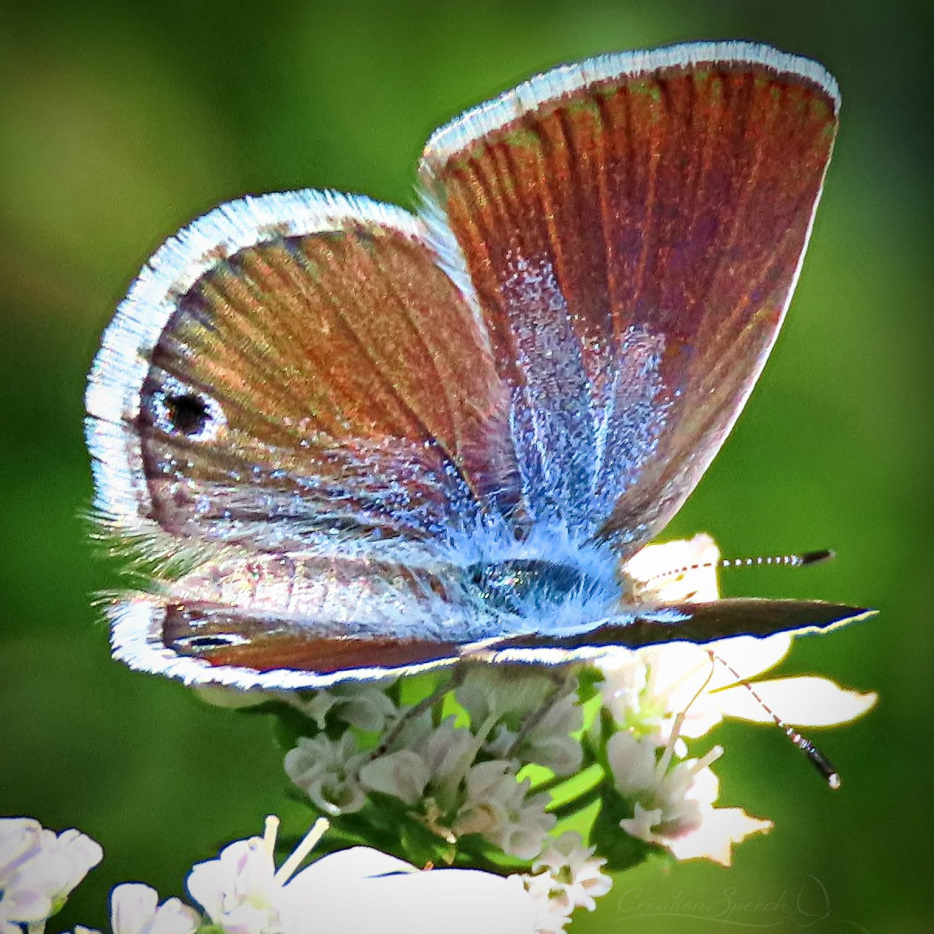
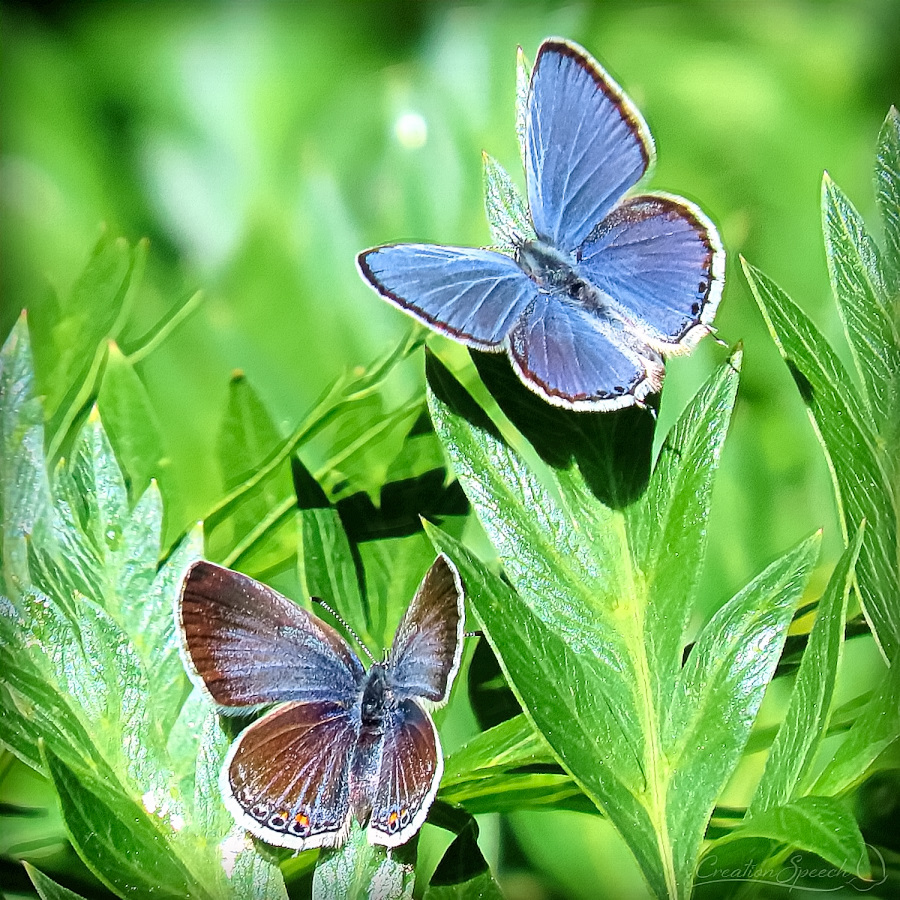
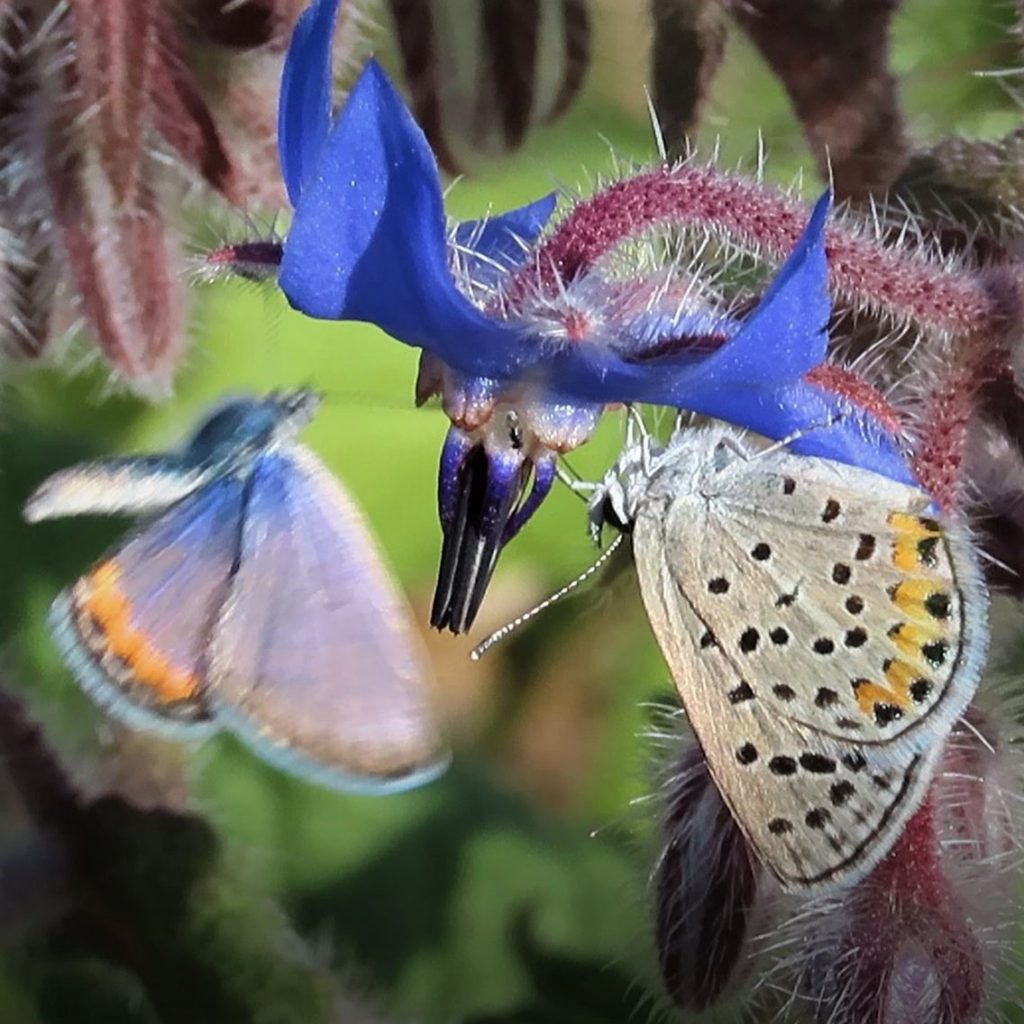
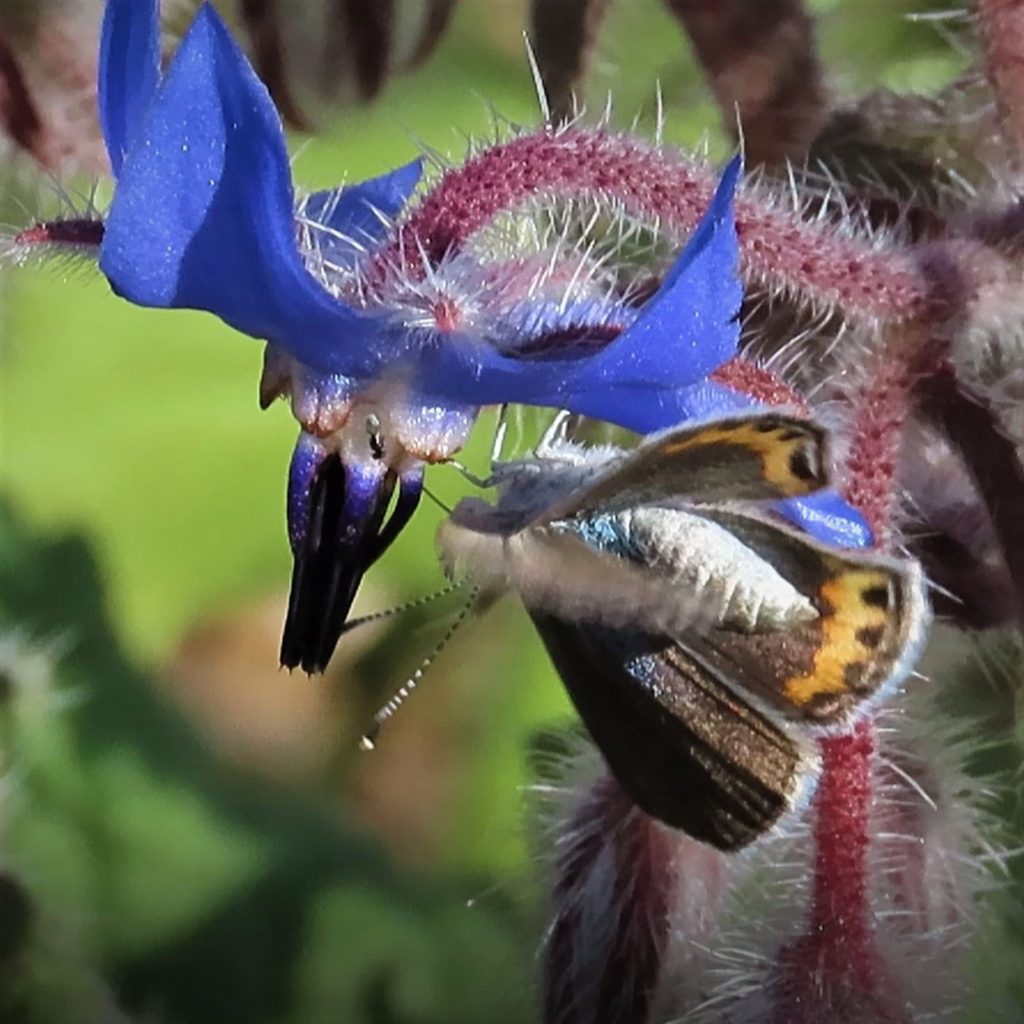
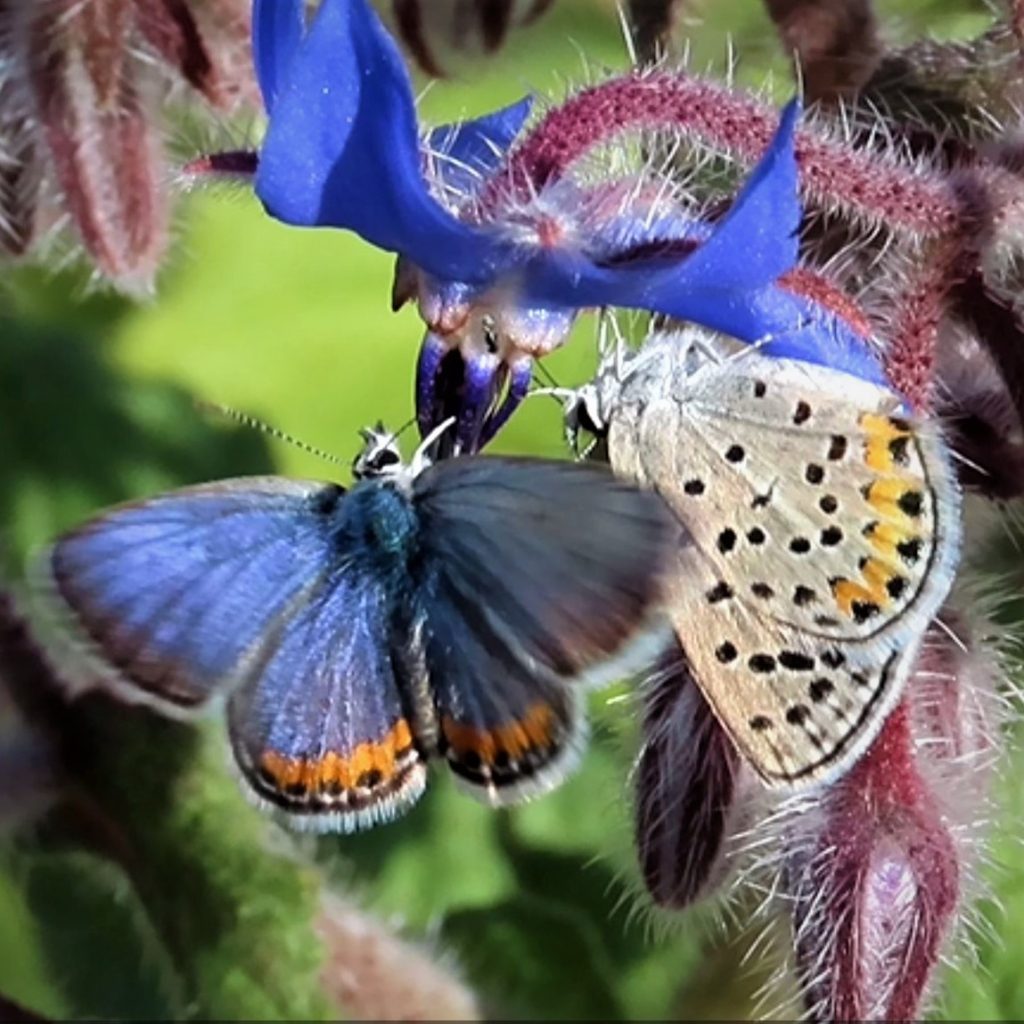
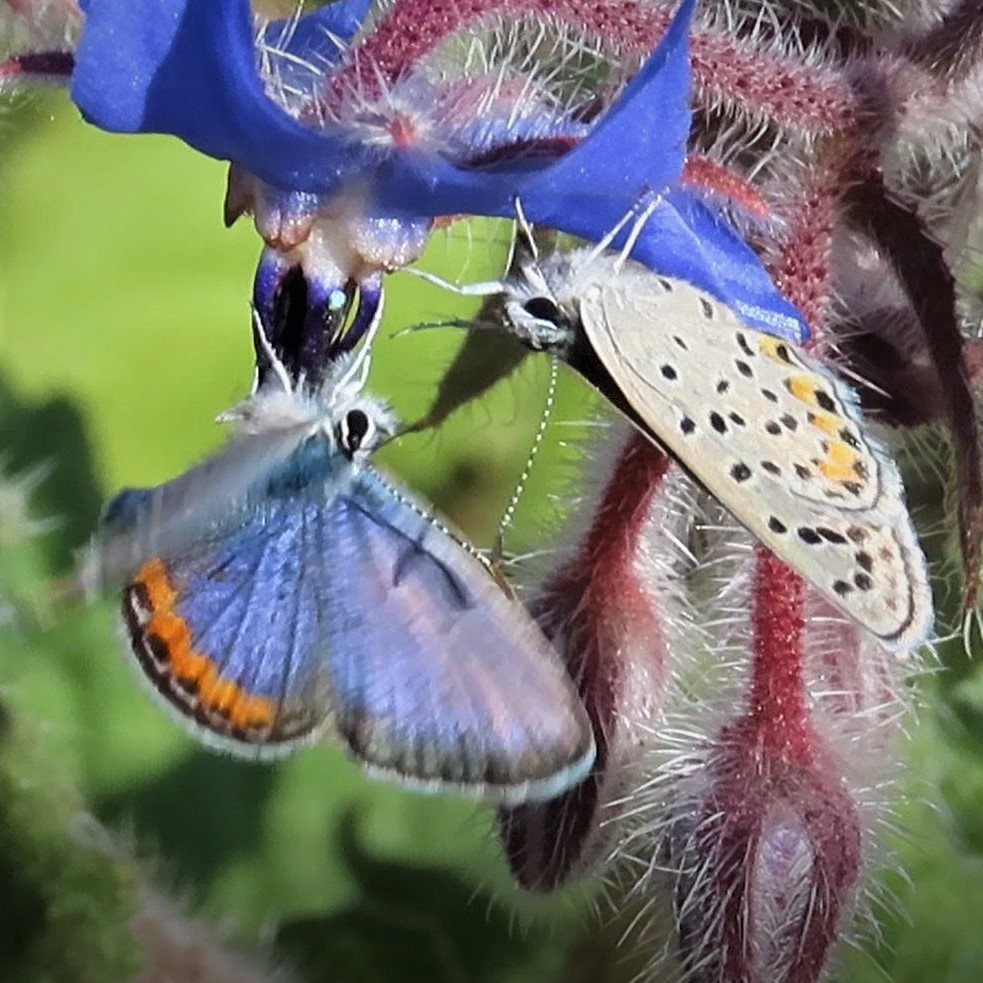
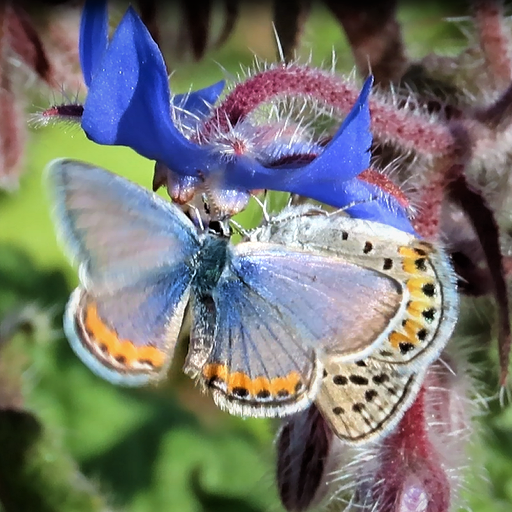
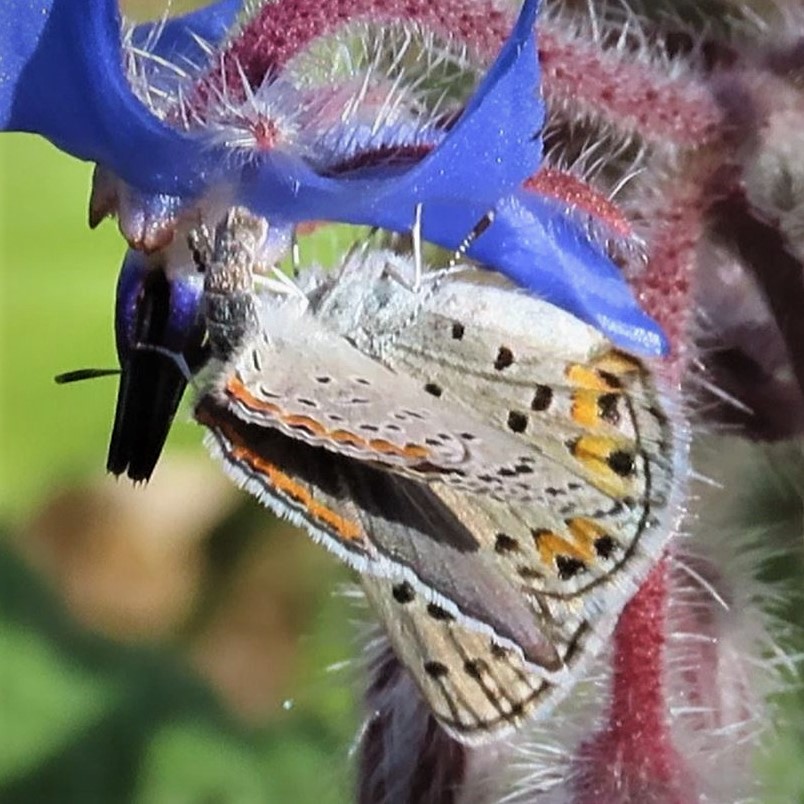
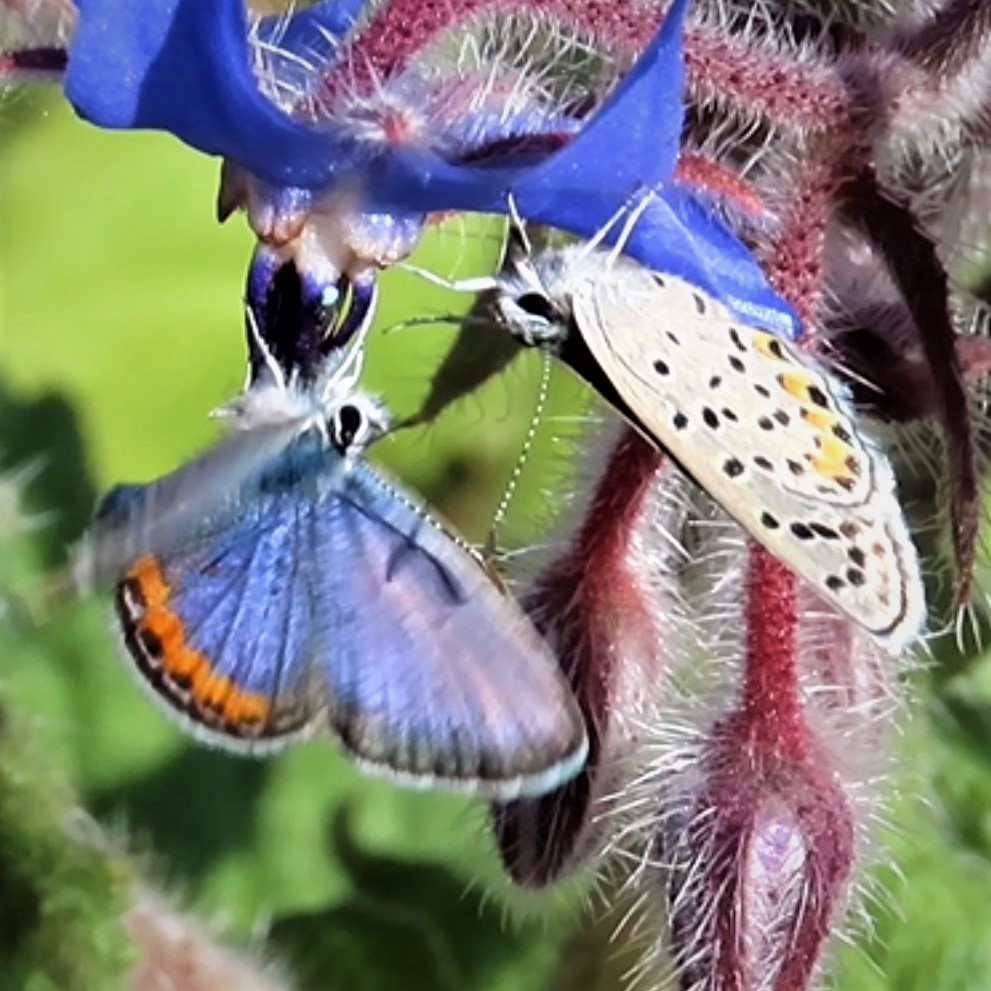
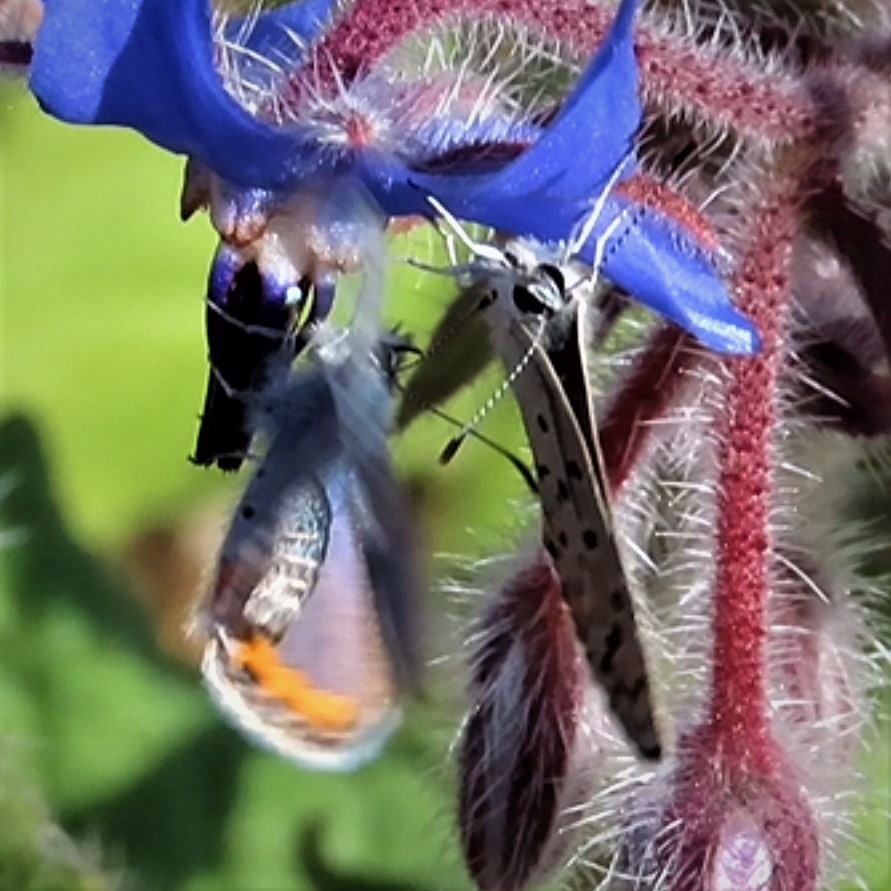
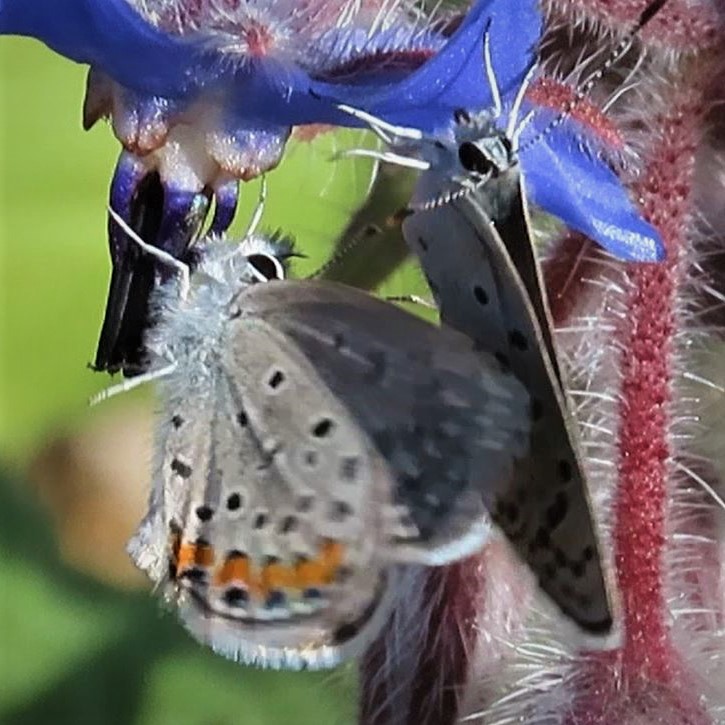
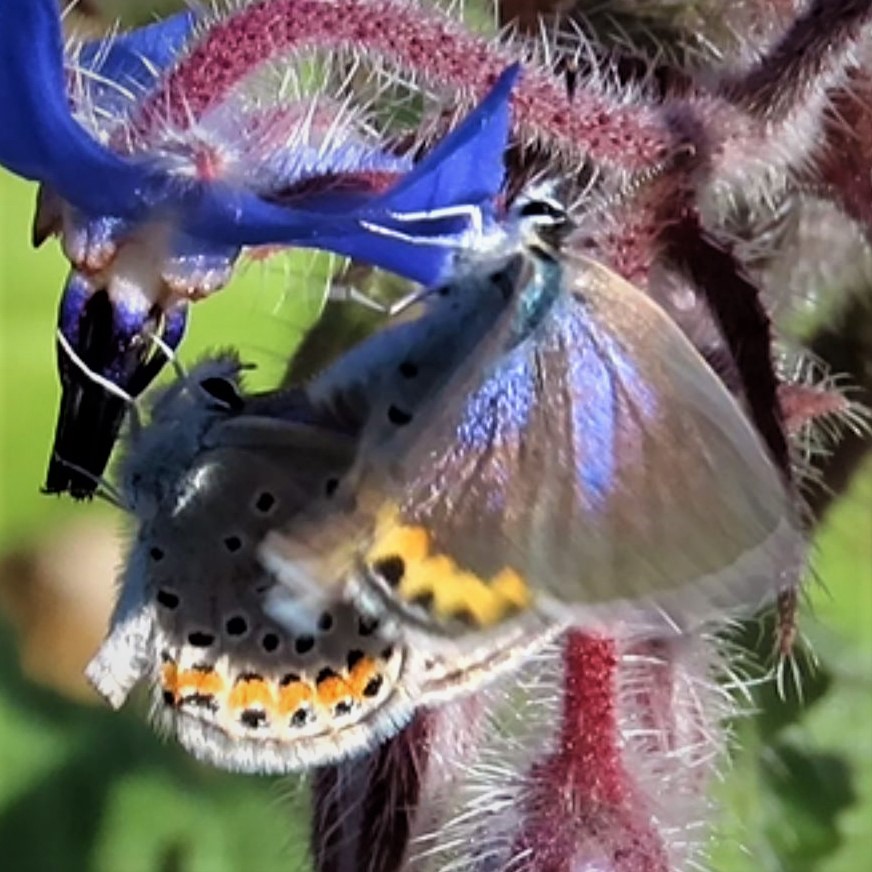
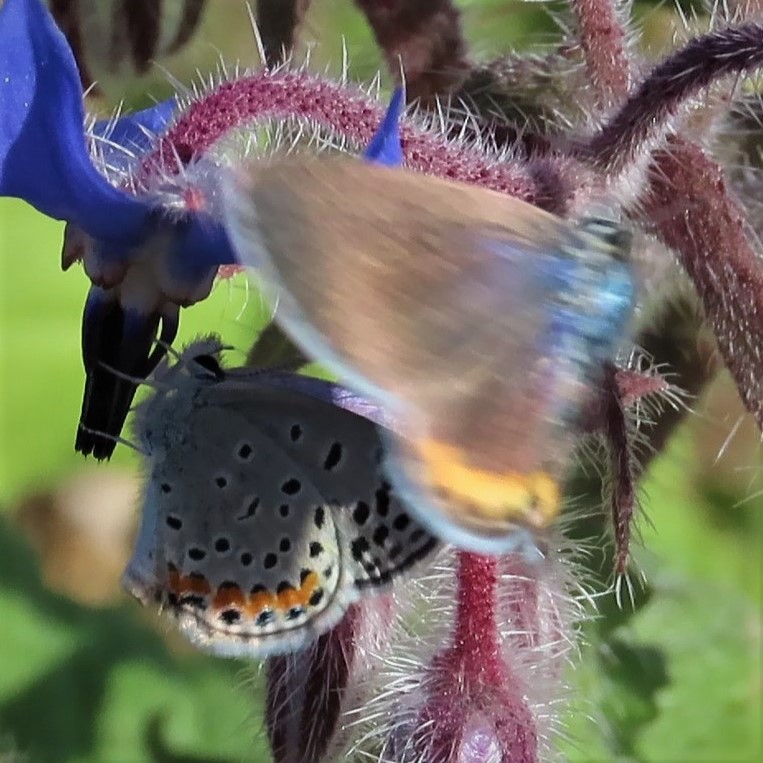
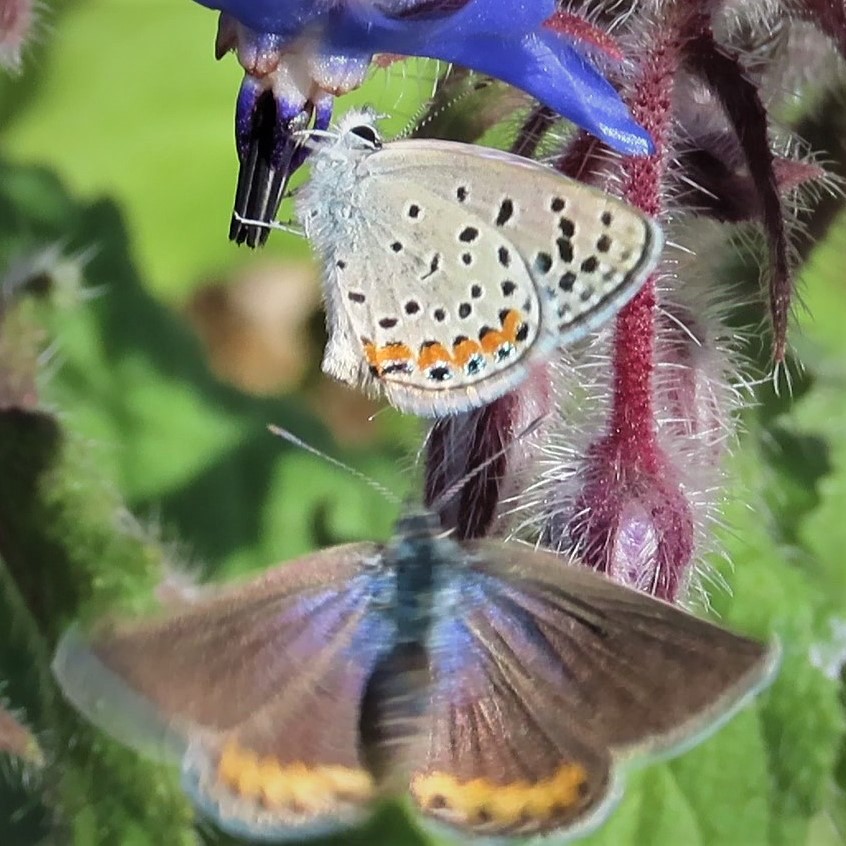
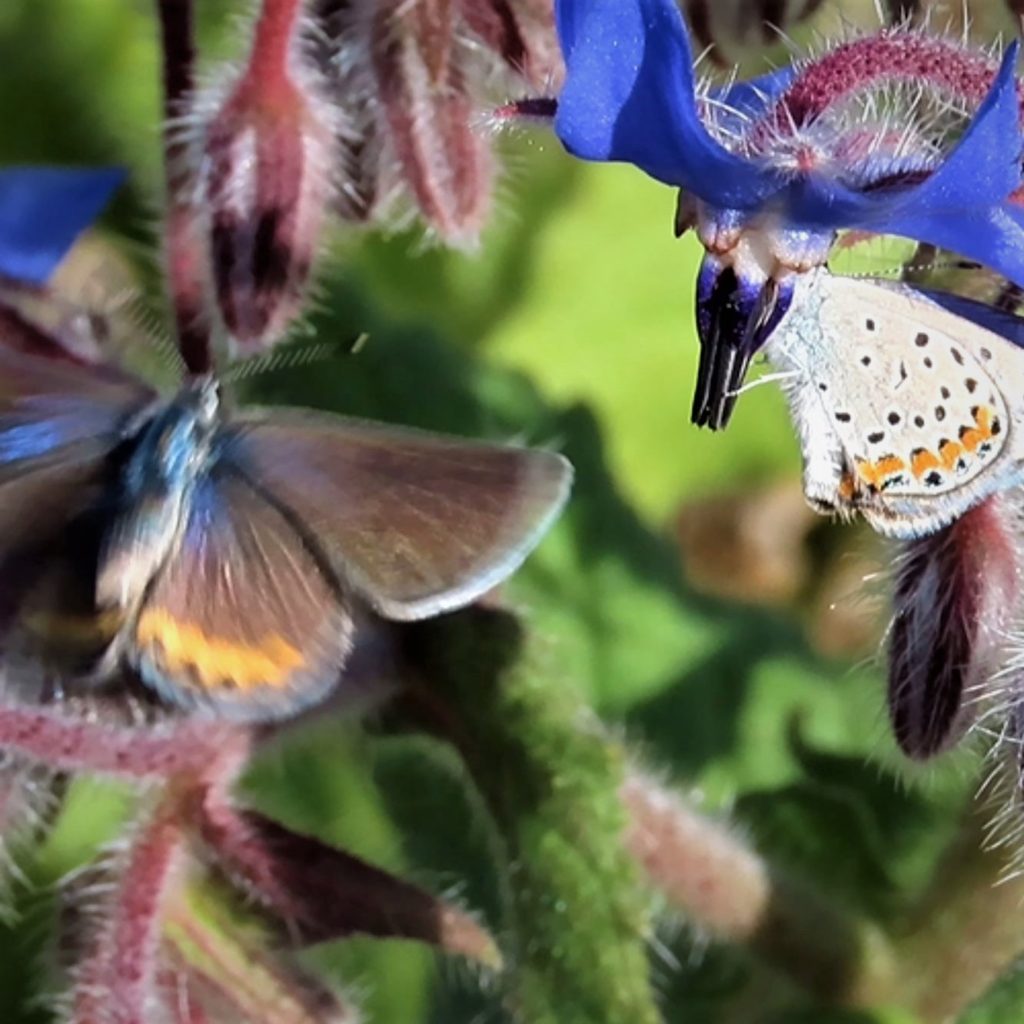
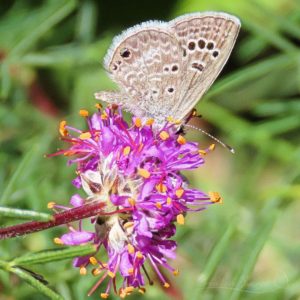
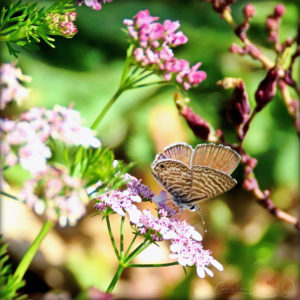
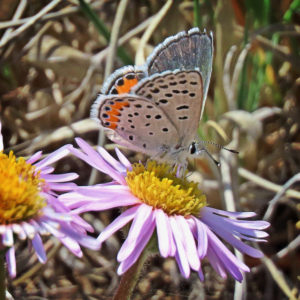
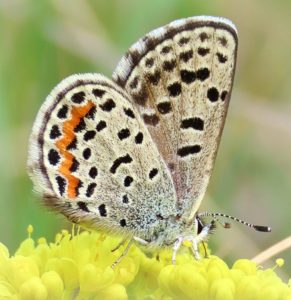
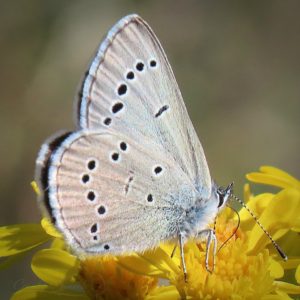
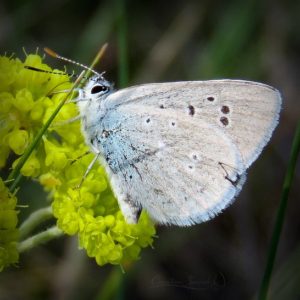
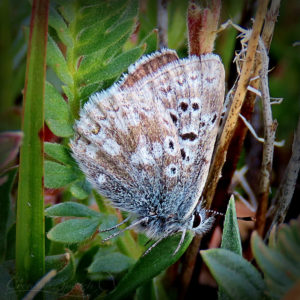
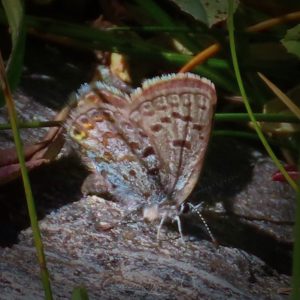
Comments are closed.